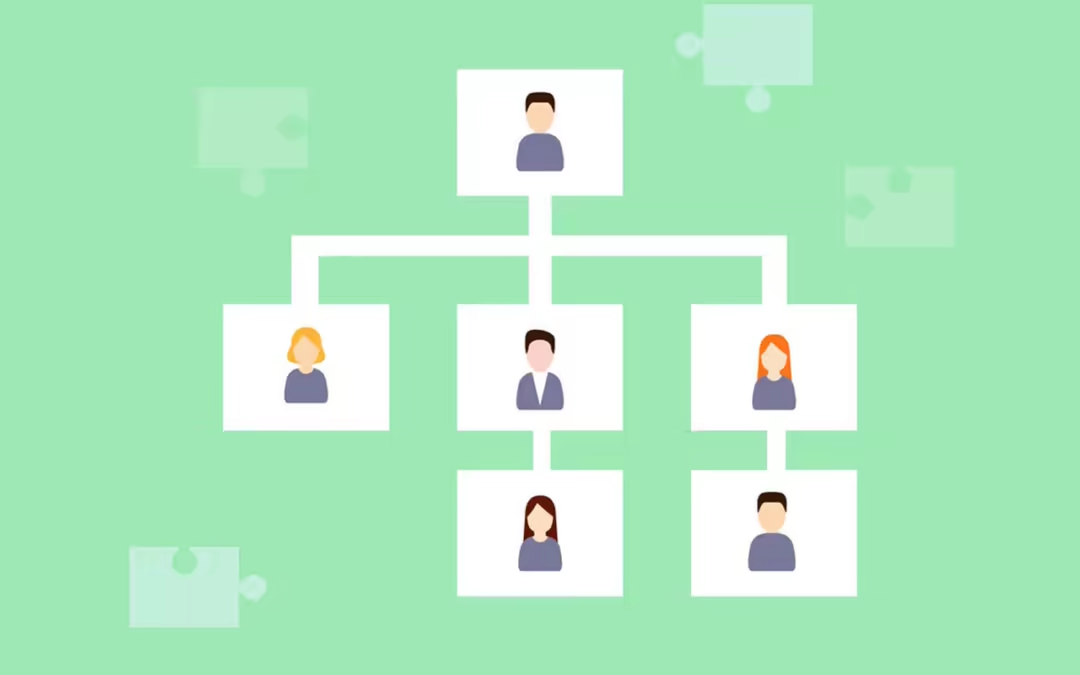Organizational structure aligns and relates parts of an organization, so it can achieve its maximum performance. The structure chosen affects an organization's success in carrying out its strategy and objectives. HR professionals should understand the characteristics, benefits, and limitations of various organizational structures to assist in this strategic alignment.
Organizational structure is the framework by which workflows through an organization. It allows groups to work together within their functions to manage tasks. Traditional organizational structures tend to be more formalized—with employees grouped by function (such as finance or operations), region, or product line. Less traditional structures are more loosely woven and flexible, with the ability to respond quickly to changing business environments.
Organizational structures have evolved since the 1800s. In the Industrial Revolution, individuals were organized to add parts to the manufacture of the product moving down the assembly line. Frederick Taylor's scientific management theory optimized the way tasks were performed, so workers performed only one task most efficiently. In the 20th century, General Motors pioneered a revolutionary organizational design in which each major division made its cars.
Today, organizational structures are changing swiftly—from virtual organizations to other flexible structures. The future will likely bring functional, product, and matrix organizational structures. However, as companies continue to evolve and increase their global presence, future organizations may embody a fluid, free-forming organization, member ownership, and an entrepreneurial approach among all members.
A hallmark of a well-aligned organization is its ability to adapt and realign as needed. To ensure long-term viability, an organization must adjust its structure to fit new economic realities without diminishing core capabilities and competitive differentiation. Organizational realignment involves closing the structural gaps impeding organizational performance.
Problems created by a misaligned organizational structure
Rapid reorganization of business units, divisions, or functions can lead to ineffective, misaligned organizational structures that do not support the business. Poorly conceived reorganizations may create significant problems, including the following:
- Structural gaps in roles, work processes, accountabilities, and critical information flows can occur when companies eliminate middle management levels without eliminating the work, forcing employees to take on additional responsibilities.
- Diminished capacity, capability and agility issues can arise when a) lower-level employees who step in when middle management is eliminated are ill-equipped to perform the required duties and b) when higher-level executives must take on more tactical responsibilities, minimizing the value of their leadership skills.
- Disorganization and improper staffing can affect a company's cost structure, cash flow, and ability to deliver goods or services. Agile organizations can rapidly deploy people to address shifting business needs. With resources cut to the bone, however, most organizations' staff members can focus only on their immediate responsibilities, leaving little time, energy, or desire to work outside their current job scope. Ultimately, diminished capacity and lagging response times affect an organization's ability to remain competitive.
The importance of aligning the structure with the business strategy
The key to profitable performance is the extent to which four business elements are aligned:
- Leadership - The individuals responsible for developing and deploying the strategy and monitoring results.
- Organization - The structure, processes, and operations by which the strategy is deployed.
- Jobs - The necessary roles and responsibilities.
- People - The experience, skills, and competencies needed to execute the strategy.
An understanding of the interdependencies of these business elements and the need for them to adapt to change quickly and strategically are essential for success in the high-performance organization. When these four elements are in sync, outstanding performance is more likely.
The organizational design process is the pivotal connector between the business of the organization (e.g., top-level leadership and organizational strategy and goals) and forms of HR support (e.g., workflow process design, selection, development, and compensation). The strategy must continually drive structure and people decisions, and the structure and design must reflect and enable effective leadership.
Achieving alignment and sustaining organizational capacity requires time and critical thinking. Organizations must identify outcomes the new structure or process is intended to produce. This typically requires recalibrating the following:
- Which work is mission-critical, can be scaled back or should be eliminated.
- Existing role requirements, while identifying necessary new or modified roles.
- Key metrics and accountabilities.
- Critical information flows.
- Decision-making authority by organization level.
The right leadership and buy-in from top executives is imperative for any organizational design process and is instrumental in unifying the organization behind a strategic direction and business priorities. HR can serve as a valuable partner in the organizational design process.
Most of HR's organizational design work occurs when changes in the competitive environment require redesigning the organization and its goals or maintaining or achieving alignment with a firm's business strategy.
Carl Tapi is a Consultant at Industrial Psychology Consultants (Pvt) Ltd, a management and human resources consulting firm. https://www.linkedin.com/in/carl-tapi-45776482/ Phone +263 (242) 481946-48/481950 or cell number +263 772 469 680 or email: carl@ipcconsultants.com or visit our website at www.ipcconsultants.com

